-
 Bitcoin
Bitcoin $85,094.1996
3.00% -
 Ethereum
Ethereum $1,898.2510
3.90% -
 Tether USDt
Tether USDt $1.0000
-0.02% -
 XRP
XRP $2.1275
1.48% -
 BNB
BNB $609.5019
0.48% -
 Solana
Solana $126.3942
1.10% -
 USDC
USDC $1.0000
-0.01% -
 Dogecoin
Dogecoin $0.1731
3.32% -
 Cardano
Cardano $0.6748
1.52% -
 TRON
TRON $0.2378
-0.16% -
 Toncoin
Toncoin $4.0436
-1.44% -
 Chainlink
Chainlink $13.9516
2.73% -
 UNUS SED LEO
UNUS SED LEO $9.2107
0.78% -
 Stellar
Stellar $0.2703
1.97% -
 Avalanche
Avalanche $19.5777
3.84% -
 Sui
Sui $2.3968
5.07% -
 Shiba Inu
Shiba Inu $0.0...01258
0.64% -
 Hedera
Hedera $0.1695
3.31% -
 Polkadot
Polkadot $4.1448
2.55% -
 Litecoin
Litecoin $84.0181
0.81% -
 MANTRA
MANTRA $6.2885
0.30% -
 Bitcoin Cash
Bitcoin Cash $307.1942
1.05% -
 Bitget Token
Bitget Token $4.6637
3.11% -
 Dai
Dai $1.0000
0.01% -
 Ethena USDe
Ethena USDe $0.9998
0.00% -
 Pi
Pi $0.7075
-2.11% -
 Hyperliquid
Hyperliquid $13.1576
0.70% -
 Monero
Monero $216.5717
0.60% -
 Uniswap
Uniswap $6.2343
3.68% -
 Aptos
Aptos $5.3417
0.81%
Practical skills of candlestick charts in NFT token trading
Candlestick charts provide valuable insights into NFT price movements, helping traders identify trends, patterns, and optimal entry/exit points for successful trading.
Mar 28, 2025 at 11:00 pm

Understanding Candlestick Charts in the NFT Market
Candlestick charts, a staple of traditional financial markets, offer valuable insights into NFT token price movements. They visually represent price fluctuations over a specific period, providing traders with a clear picture of buying and selling pressure. Each candlestick shows the opening, closing, high, and low prices, revealing crucial information about market sentiment. Understanding how to interpret these patterns is crucial for successful NFT trading.
Deciphering Candlestick Patterns
Various candlestick patterns signal potential price shifts. Bullish patterns, like the hammer and morning star, suggest a potential price increase. Conversely, bearish patterns, such as the hanging man and evening star, indicate a possible price decline. Identifying these patterns requires practice and a keen eye for detail. The context within the broader market trend is also critical for accurate interpretation.
Identifying Support and Resistance Levels
Support and resistance levels are crucial in identifying potential price reversal points. Support is a price level where buying pressure is strong enough to prevent further price declines. Resistance, conversely, is a price level where selling pressure is strong enough to prevent further price increases. Candlestick charts help pinpoint these levels by showing where price action repeatedly stalls or reverses. Breakouts above resistance or below support can signal significant price movements.
Spotting Trends with Candlesticks
Candlestick charts are invaluable for identifying market trends. A series of consecutive bullish candlesticks often indicates an uptrend, while a series of bearish candlesticks suggests a downtrend. The length of the candlesticks also provides clues; longer candles represent stronger momentum, while shorter candles indicate weaker momentum. Combining candlestick patterns with trend analysis significantly enhances trading decisions.
Volume Analysis in Conjunction with Candlesticks
While candlestick charts display price action, volume analysis provides context. High volume accompanying a price increase confirms the strength of the bullish move, while high volume accompanying a price decrease confirms the strength of the bearish move. Low volume during price movements can signal a lack of conviction and potentially a weakening trend. Analyzing volume alongside candlestick patterns improves the accuracy of predictions.
Using Candlestick Charts for Entry and Exit Strategies
Effective use of candlestick charts involves developing well-defined entry and exit strategies. For example, a trader might wait for a bullish engulfing pattern to confirm a potential uptrend before entering a long position. Conversely, a bearish engulfing pattern could signal an appropriate time to exit a long position or enter a short position. Risk management is paramount; always set stop-loss orders to limit potential losses.
Practical Application: Step-by-Step Example
Let's consider a hypothetical scenario. You're interested in a specific NFT token.
- Step 1: Analyze the recent price action using a candlestick chart. Look for established support and resistance levels.
- Step 2: Identify any significant candlestick patterns forming, such as a hammer or a shooting star.
- Step 3: Observe the volume associated with these patterns. High volume confirms the strength of the move.
- Step 4: Consider the overall market trend. Is the token part of a larger uptrend or downtrend?
- Step 5: Based on your analysis, decide on an entry and exit strategy, including stop-loss and take-profit levels.
Advanced Techniques
More advanced techniques involve combining candlestick patterns with other technical indicators, such as moving averages and Relative Strength Index (RSI). This provides a more holistic view of the market and strengthens trading decisions. However, remember that no technique guarantees success. Thorough research and risk management are essential.
The Importance of Risk Management
Even with the most sophisticated candlestick analysis, risk management remains crucial. Never invest more than you can afford to lose. Always use stop-loss orders to limit potential losses, and diversify your NFT portfolio to mitigate risk. Consider the volatility of the NFT market and adjust your trading strategy accordingly. Consistent learning and adaptation are key to long-term success.
Choosing the Right Timeframe
The timeframe of your candlestick chart significantly impacts the analysis. Short-term charts (e.g., 1-minute, 5-minute) show rapid price fluctuations, ideal for scalping. Longer-term charts (e.g., daily, weekly) provide a broader perspective, better suited for swing trading or long-term investing. Choosing the appropriate timeframe depends on your trading style and risk tolerance.
NFT Market Specific Considerations
The NFT market is highly volatile and influenced by factors unique to the digital art world. News events, influencer endorsements, and community sentiment can significantly impact prices. Incorporating these factors into your candlestick analysis provides a more comprehensive view. Staying informed about the NFT ecosystem is vital for success.
Frequently Asked Questions
Q: Are candlestick charts reliable for NFT trading?
A: Candlestick charts are a valuable tool but not a foolproof predictor. They provide insights into price action, but external factors also influence NFT prices. Use them in conjunction with other analyses and risk management strategies.
Q: What are the best candlestick patterns for NFT trading?
A: There isn't a single "best" pattern. The effectiveness of a pattern depends on the context. However, patterns like bullish and bearish engulfing patterns, hammers, and shooting stars are frequently used and can provide valuable insights.
Q: How do I combine candlestick charts with other technical indicators?
A: You can overlay moving averages on your candlestick chart to identify trends. Indicators like RSI can help gauge market momentum and potential overbought or oversold conditions. Experiment to find combinations that suit your trading style.
Q: Can candlestick charts predict the future price of NFTs?
A: No, candlestick charts cannot predict the future. They reveal past price action and potential patterns, but the NFT market is highly volatile and influenced by numerous unpredictable factors. They offer insights, not guarantees.
Q: Where can I find candlestick charts for NFT tokens?
A: Many cryptocurrency exchanges and charting platforms offer candlestick charts for various NFT tokens. Research different platforms to find one that suits your needs. Ensure the platform offers reliable data and features you require.
Disclaimer:info@kdj.com
The information provided is not trading advice. kdj.com does not assume any responsibility for any investments made based on the information provided in this article. Cryptocurrencies are highly volatile and it is highly recommended that you invest with caution after thorough research!
If you believe that the content used on this website infringes your copyright, please contact us immediately (info@kdj.com) and we will delete it promptly.
- Shibarium Processes Over 1 Billion Transactions
- 2025-04-02 08:35:12
- Bitcoin (BTC) Price Enters April on a Bullish Note With an Intraday Urge of +3%
- 2025-04-02 08:35:12
- Can Bitcoin Replace Banks? Exploring the Financial Accessibility, Security and Economic Stability
- 2025-04-02 08:30:12
- Despite Bitcoin's 2.2% Gains on April 1, BTC (BTC) Hasn't Traded above $89,000 since March 7
- 2025-04-02 08:30:12
- Bitcoin May Be a Useful Hedge Against Inflation in the Near Future as Market Uncertainty Is Growing
- 2025-04-02 08:25:12
- Zcash Rises 11%, Monero Remains Stable—BlockDAG's Beta Testnet Spreads Like Wildfire, Hitting 110K Wallets
- 2025-04-02 08:25:12
Related knowledge
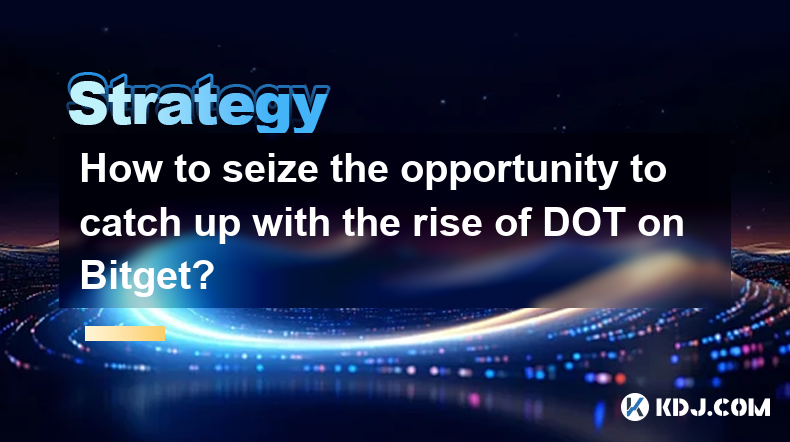
How to seize the opportunity to catch up with the rise of DOT on Bitget?
Mar 31,2025 at 07:29pm
Understanding the DOT/Bitget OpportunityPolkaDot (DOT) is a prominent cryptocurrency known for its innovative cross-chain interoperability solutions. Bitget is a well-established cryptocurrency exchange offering a variety of trading options, including DOT trading pairs. Seizing opportunities within this pairing requires understanding market dynamics, r...
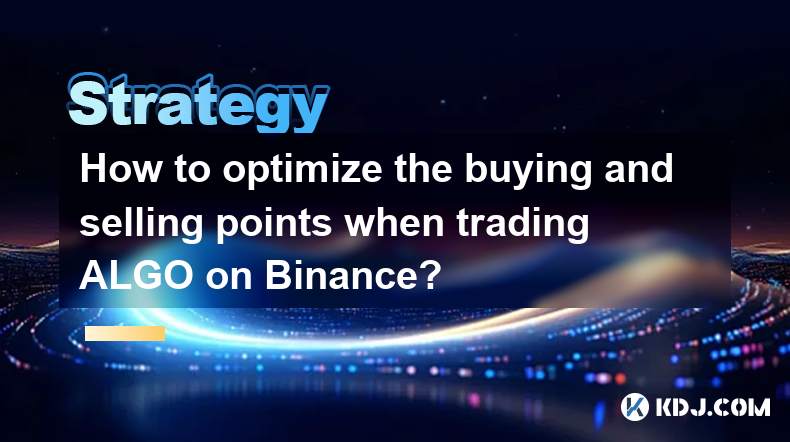
How to optimize the buying and selling points when trading ALGO on Binance?
Mar 31,2025 at 12:28am
Understanding ALGO Price Volatility on BinanceAlgorand (ALGO) price, like most cryptocurrencies, is highly volatile. Successful trading requires understanding these fluctuations and identifying optimal entry and exit points. This involves analyzing market trends, using technical indicators, and managing risk effectively. Ignoring these factors can lead...
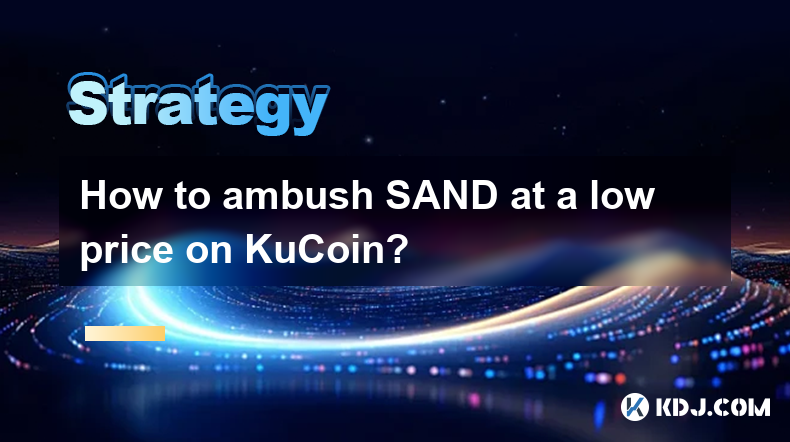
How to ambush SAND at a low price on KuCoin?
Apr 02,2025 at 06:22am
Understanding the SAND Price VolatilityThe Sandbox (SAND) token, like most cryptocurrencies, experiences price fluctuations. These fluctuations are influenced by various factors, including market sentiment, technological developments within the Sandbox metaverse, broader cryptocurrency market trends, and news impacting the overall blockchain space. Suc...
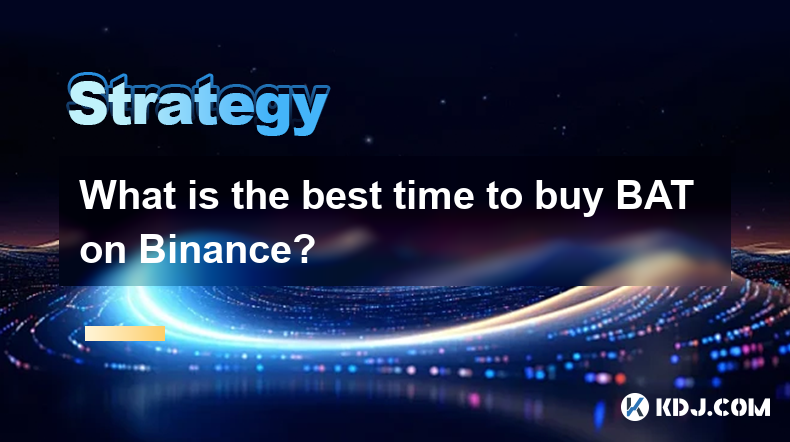
What is the best time to buy BAT on Binance?
Apr 01,2025 at 02:07am
There's no single 'best' time to buy Basic Attention Token (BAT) on Binance, or any cryptocurrency for that matter. The cryptocurrency market is incredibly volatile, influenced by a multitude of factors, making precise prediction impossible. Timing the market perfectly is a fool's errand. Instead, focus on a long-term strategy and consider your persona...
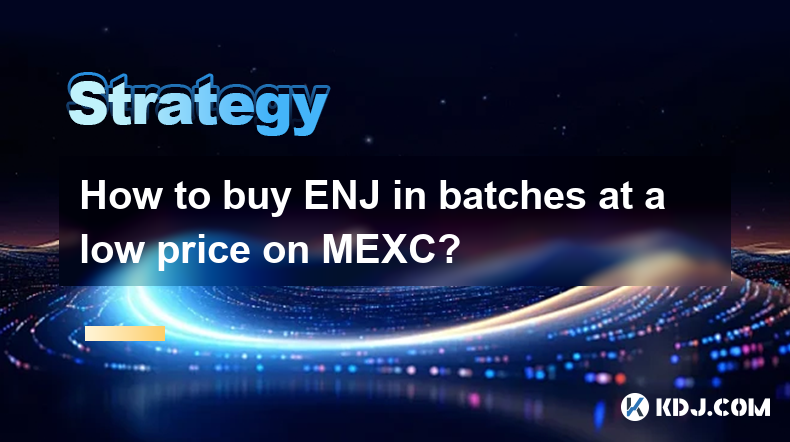
How to buy ENJ in batches at a low price on MEXC?
Mar 30,2025 at 10:28am
Understanding Batch Buying and Price FluctuationsBuying ENJ (Enjin Coin) in batches on MEXC, or any exchange, aims to mitigate the risk of buying high. Cryptocurrency prices are incredibly volatile. Purchasing a large amount at once exposes you to significant losses if the price drops immediately after your purchase. Batch buying spreads out your inves...
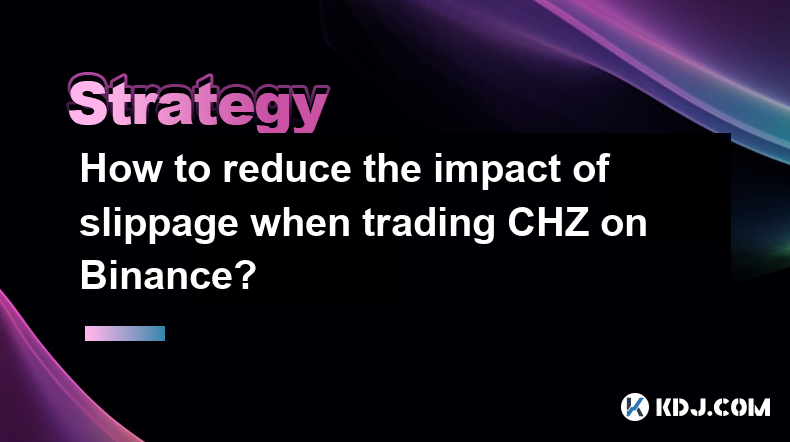
How to reduce the impact of slippage when trading CHZ on Binance?
Apr 01,2025 at 08:00pm
Understanding Slippage in CHZ TradingSlippage refers to the difference between the expected price of a trade and the actual execution price. In the volatile cryptocurrency market, especially with tokens like CHZ (Chiliz), slippage can significantly impact your profits. Several factors contribute to slippage, and understanding them is crucial to mitigat...

How to seize the opportunity to catch up with the rise of DOT on Bitget?
Mar 31,2025 at 07:29pm
Understanding the DOT/Bitget OpportunityPolkaDot (DOT) is a prominent cryptocurrency known for its innovative cross-chain interoperability solutions. Bitget is a well-established cryptocurrency exchange offering a variety of trading options, including DOT trading pairs. Seizing opportunities within this pairing requires understanding market dynamics, r...

How to optimize the buying and selling points when trading ALGO on Binance?
Mar 31,2025 at 12:28am
Understanding ALGO Price Volatility on BinanceAlgorand (ALGO) price, like most cryptocurrencies, is highly volatile. Successful trading requires understanding these fluctuations and identifying optimal entry and exit points. This involves analyzing market trends, using technical indicators, and managing risk effectively. Ignoring these factors can lead...

How to ambush SAND at a low price on KuCoin?
Apr 02,2025 at 06:22am
Understanding the SAND Price VolatilityThe Sandbox (SAND) token, like most cryptocurrencies, experiences price fluctuations. These fluctuations are influenced by various factors, including market sentiment, technological developments within the Sandbox metaverse, broader cryptocurrency market trends, and news impacting the overall blockchain space. Suc...

What is the best time to buy BAT on Binance?
Apr 01,2025 at 02:07am
There's no single 'best' time to buy Basic Attention Token (BAT) on Binance, or any cryptocurrency for that matter. The cryptocurrency market is incredibly volatile, influenced by a multitude of factors, making precise prediction impossible. Timing the market perfectly is a fool's errand. Instead, focus on a long-term strategy and consider your persona...

How to buy ENJ in batches at a low price on MEXC?
Mar 30,2025 at 10:28am
Understanding Batch Buying and Price FluctuationsBuying ENJ (Enjin Coin) in batches on MEXC, or any exchange, aims to mitigate the risk of buying high. Cryptocurrency prices are incredibly volatile. Purchasing a large amount at once exposes you to significant losses if the price drops immediately after your purchase. Batch buying spreads out your inves...

How to reduce the impact of slippage when trading CHZ on Binance?
Apr 01,2025 at 08:00pm
Understanding Slippage in CHZ TradingSlippage refers to the difference between the expected price of a trade and the actual execution price. In the volatile cryptocurrency market, especially with tokens like CHZ (Chiliz), slippage can significantly impact your profits. Several factors contribute to slippage, and understanding them is crucial to mitigat...
See all articles























































































